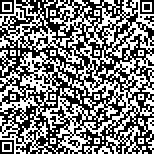| Quote
: |
李欣怡,李亚军,李祎琳,陈莉,陈洁,许玥,张莉,刘通.多时间点电针对腰多裂肌损伤大鼠HGF及相关因子影响[J].湖南中医药大学学报英文版,2020,40(12):1488-1493.[Click to copy
] |
|
| |
|
|
| This paper
:Browser 3441times Download 1828times |
| 多时间点电针对腰多裂肌损伤大鼠HGF及相关因子影响 |
| 李欣怡,李亚军,李祎琳,陈莉,陈洁,许玥,张莉,刘通 |
| (北京中医药大学, 北京 100029;河北省保定市第一中心医院, 河北 保定 071000;承德医学院, 河北 承德 067000;中国中医药出版社, 北京 100029;广州中医药大学第五临床医学院, 广东 广州 510000) |
| 摘要: |
| 目的 观察多时间点电针对大鼠腰多裂肌损伤模型肝细胞生长因子(hepatocyte growth factor,HGF)及其特异性受体c-Met以及细胞性骨髓瘤样癌基因(cellular-myelocytomatosis oncogene,c-Myc)的影响。方法 将SPF级雄性SD大鼠54只随机分为空白组、模型组和电针组,每组18只;再根据干预时间点每组分1 d、3 d、7 d 3个亚组,各组6只。除空白组外,余36只大鼠复制布比卡因腰多裂肌损伤模型。电针组造模后24 h电针干预双侧委中穴。同步取双侧多裂肌组织,HE染色观察肌纤维改变;免疫组化法观察HGF、c-Myc阳性表达;Western blot法观察c-Met表达。结果 与空白组比,模型组1 d大鼠腰多裂肌HGF、c-Met阳性表达值低(P<0.01),c-Myc阳性表达高(P<0.05),模型组3 d、7 d腰多裂肌c-Met表达量低(P<0.01)。与模型组比较,电针组1 d组腰多裂肌HGF表达较高、c-Met表达较低(P<0.01或P<0.05),电针组3 d组腰多裂肌c-Met表达量较高(P<0.01),电针组7 d组腰多裂肌c-Myc表达较高、c-Met表达较低(P<0.01或P<0.05)。结论 电针委中穴早期腰多裂肌HGF、c-Met和c-Myc表达均上调,促肌卫星细胞增殖,加速腰多裂肌损伤后修复。 |
| 关键词: 腰多裂肌损伤 电针 委中穴 肌卫星细胞 肝细胞生长因子 |
| DOI:10.3969/j.issn.1674-070X.2020.12.010 |
| Received:September 09, 2020 |
| 基金项目:国家自然科学基金项目(81704179)。 |
|
| Effects of Electroacupuncture at Multiple Time Points on HGF and Related Factors in Rats with Lumbar Multifidus Injury |
| LI Xinyi,LI Yajun,LI Yilin,CHEN Li,CHEN Jie,XU Yue,ZHANG Li,LIU Tong |
| (Beijing University of Chinese Medicine, Beijing 100029, China;Baoding First Central Hospital, Baoding, Hebei 071000, China;Chengde Medical University, Chengde, Hebei 067000, China;China Press of Traditional Chinese Medicine, Beijing 100029, China;The Fifth Clinical Medical School of Guangzhou University of Chinese Medicine, Guangzhou, Guangdong 510000, China) |
| Abstract: |
| Objective To observe effects of electroacupuncture at multiple time points on the hepatocyte growth factor (HGF), its specific receptor c-Met and the cellular-myelocytomatosis oncogene (c-Myc) in rat models of lumbar multifidus injury. Methods Fifty-four male SD rats of the SPF grade were randomly assigned into a blank group, a model group and an electroacupuncture group, with 18 rats in each group. According to intervention time points, each group was assigned into 3 subgroups of 1 day, 3 days and 7 days, with 6 rats in each subgroup. In addition to the blank group, the remaining 36 rats were used to establish rat models of bupivacaine-induced lumbar multifidus injury. The electroacupuncture group were given electroacupuncture intervention at bilateral Weizhong (BL40) 24 hours after the modeling. Bilateral multifidus tissues were taken out simultaneously. HE staining was used to observe changes of muscle fiber. Immunohistochemistry was used to observe positive expressions of HGF and c-Myc. Western blot was used to observe the expression of c-Met. Results Compared with the blank group, the expressions of lumbar multifidus HGF and c-Met were lower (P<0.01), and the expressiom of c-Myc was higher in the the 1 day subgroup of model group (P<0.05); the expression of c-Met was lower in the 3 days and 7 days subgroups of model group (P<0.01). Compared with the model group, the expression of lumbar multifidus HGF was higher and the expression of c-Met was lower in the 1 day subgroup of the electroacupuncture group (P<0.01 or P<0.05); the expression of lumbar multifidus c-Met was higher in the 3 days subgroup of the electroacupuncture group (P<0.01); the expression of lumbar multifidus c-Myc was higher and the expression of c-Met was lower in the 7 days subgroup of the electroacupuncture group (P<0.01 or P<0.05). Conclusion Three days after electroacupuncture at Weizhong (BL40), the expressions of lumbar multifidus HGF, c-Met and c-Myc were increased, which promoted proliferation of muscle satellite cells and accelerated repair of lumbar multifidi after injury. |
| Key words: lumbar multifidus injury electroacupuncture Weizhong (BL40) muscle satellite cell hepatocyte growth factor |
|

二维码(扫一下试试看!) |
|
|
|
|


